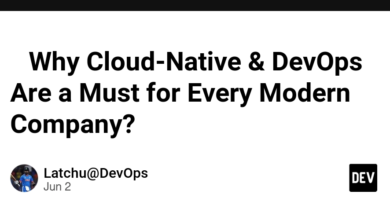راهنمای خارجی ها برای یافتن شغل توسعه دهنده نرم افزار در ژاپن

آیا تا به حال فکر کرده اید که کار در ژاپن به عنوان یک توسعه دهنده نرم افزار چگونه خواهد بود؟ این مقاله است
در مورد پیدا کردن یک فناوری، به ویژه شغل فناوری اطلاعات در ژاپن، از جمله توسعه نرم افزار و سایر موقعیت های مهندسی نرم افزار.
بسیاری از ما آرزو داریم به کشورهای دیگر سفر کنیم، فرهنگ های مختلف را تجربه کنیم و چیزها و افراد جدید را بیاموزیم. با این حال، ما معمولاً آنچه را که سایر گردشگران می بینند و آنچه را که سایر گردشگران تجربه می کنند، تجربه می کنیم. شناخت واقعی یک کشور تنها با زندگی طولانی مدت در آنجا حاصل می شود – یک یا دو سال، اغلب بیشتر.
اکثر متخصصان خارجی که در مشاغل فناوری اطلاعات در ژاپن کار می کنند، تجربیات بسیار خوبی دارند. این یک مکان بسیار جالب برای کار، زندگی و کشف است. برای متخصصان نرم افزاری که مایلند تعادل کاملی بین چشم انداز رشد آینده، امنیت شغلی و حقوق با سایر جنبه های زندگی شخصی داشته باشند، ژاپن مکانی عالی برای متخصصان فناوری اطلاعات است زیرا با توجه به جنبه های ذکر شده در بالا، مشاغل در اینجا می توانند بسیار سودمند باشند.
حقوق در ژاپن ممکن است در برخی موارد کمتر از استانداردهای ایالات متحده باشد. با این حال، خارجی ها با مهارت های خوب می توانند شغلی با حقوق مناسب و با چشم انداز زیادی برای آینده پیدا کنند. بنابراین، اگر قصد دارید به عنوان یک متخصص فناوری اطلاعات در ژاپن کار کنید، بیایید در مورد چگونگی یافتن شغل به عنوان مهندس نرم افزار در ژاپن بحث کنیم.
فرصت های شغلی فناوری اطلاعات در ژاپن
اگر نمیدانید که متخصصان فناوری اطلاعات در ژاپن چه نوع حقوقی میتوانند دریافت کنند، ممکن است دوست داشته باشید مقاله مربوط به میانگین حقوق توسعهدهندگان نرمافزار در ژاپن را بخوانید.
البته، اگر زبان اول شما ژاپنی نیست، ممکن است تعجب کنید: “آیا می توانم بدون دانستن زبان ژاپنی در ژاپن شغلی پیدا کنم؟” در اینجا خبرهای خوبی وجود دارد که شرکتهای فناوری مدرن در ژاپن تمرکز فوقالعادهای بر افزایش تنوع نیروی کار دارند و فقط به روی استعدادهای انگلیسی زبان باز هستند.
خبر خوب دیگر این است که در میان کشورهای توسعه یافته، ژاپن یکی از پایین ترین نرخ های بیکاری را دارد. طبق آمار دولت ژاپن در ماه می 2022، مشاغل خالی در توکیو 44 درصد از تعداد متقاضیان کار بیشتر است!
یکی از دلایل آن نرخ کلی پایین تولد و کاهش جمعیت کشور است، به این معنی که شرکتها به دنبال افراد بیشتری هستند – به ویژه در صنایع جوان و متمرکز بر فناوری – نسبت به ژاپن.
این بدان معناست که نسبت فرصتهای شغلی به متقاضیان 1.44 شغل برای هر جوینده کار در توکیو، 1.18 در اوزاکا و 1.24 شغل در سراسر کشور بود. برای جزئیات بیشتر در مورد تفاوت های بین دو شهر بزرگ ژاپن، می توانید این مقاله در مورد توکیو در مقابل را نیز بررسی کنید. مقایسه اوزاکا
کارفرمایان استخدام در ژاپن با مهارت دو زبانه ژاپنی و انگلیسی زبان را چالش برانگیز می دانند. بنابراین، اگر دوزبانه هستید، به شما تبریک میگویم – تقاضای شما زیاد است! فرصت های شغلی زیادی برای استعدادهایی وجود دارد که می توانند ژاپنی و انگلیسی صحبت کنند.
اما حتی اگر هنوز ژاپنی را یاد نگرفته اید، کار در ژاپن بدون دانستن ژاپنی کار چندان دشواری نیست. این روزها بسیاری از شرکت های ژاپنی بدون تسلط به زبان ژاپنی به روی خارجی ها باز می شوند. همچنین شرکتهای استخدامی وجود دارند که بر روی نامزدهایی که به زبان انگلیسی صحبت میکنند متمرکز هستند، که میتواند برای یافتن شغل مناسب برای شما بسیار مفید باشد.
پیدا کردن شغل IT
در حالی که بیشتر مشاغل فناوری اطلاعات در ژاپن به مهارت های زبان ژاپنی نیاز دارند، این مانع را می توان به راحتی با مهارت های تخصصی فناوری اطلاعات مانند محاسبات ابری، علم داده، مهندسی داده، اتوماسیون، هوش مصنوعی، یادگیری ماشین و یادگیری عمیق برطرف کرد.
چه می شود اگر مهارت های فناوری اطلاعات من خیلی خاص نباشد؟
حتی اگر مهارتهای فناوری اطلاعات شما گستردهتر باشد، به دلایل زیر میتوانید شغلی در ژاپن پیدا کنید:
● بسیاری از شرکتها و استارتآپهای مترقی در مقیاس متوسط در ژاپن میخواهند با استخدام نامزدهای انگلیسی زبان، تنوع بیشتری داشته باشند تا به آنها کمک کنند تا در سطح جهانی برای تحقق چشمانداز توسعه در خارج از ژاپن به رقابت بپردازند.
● کووید چیزهای زیادی را تغییر داده است – برخی برای بد و برخی برای خوب. یکی از عوارض خوب این است که شرکت ها انعطاف پذیرتر شده اند و برخی از شرکت ها حتی مشاغل راه دور باز می کنند.
آیا می توانم یک شغل IT در ژاپن از خارج از کشور پیدا کنم؟
پاسخ کوتاه بله است. اما اگر هنوز در ژاپن نیستید. یافتن شغل IT در ژاپن به دلایل زیر می تواند چالش برانگیز باشد:
1. ملاقات های چهره به چهره به طور سنتی در ژاپن ترجیح داده می شود
حتی برای یک گفتگوی کوتاه، جایی که یک تماس تلفنی هدف را تامین میکند، ژاپنیها همچنان جلسات حضوری را ترجیح میدهند، زیرا آنها بخشی جدایی ناپذیر از فرهنگ کار ژاپنی هستند. البته، بعد از کووید همه چیز تغییر کرده است، اما سنت ها در ژاپن بزرگ است. در مصاحبه های شغلی هم همینطور. استخدام یک کارمند یک تصمیم مهم است و شرکت های ژاپنی ترجیح می دهند قبل از انتخاب یا رد نامزدها با آنها ملاقات کنند.
2. موانع زبانی
حتی برای ژاپنی دوزبانه، ارتباط رو در رو با یک انگلیسی زبان به جای تلفن، به ویژه با تفاوت لهجه، همیشه راحت تر است.
3. اولویت برای نامزدهایی که قبلاً در ژاپن هستند
شرکت های ژاپنی ترجیح می دهند نامزدهایی را که قبلاً در ژاپن هستند استخدام کنند. به طور سنتی، شرکت های بزرگ ژاپنی از سیستم شوکاتسو استفاده می کنند و کارمندانی را از دانشگاه ها قبل از فارغ التحصیلی استخدام می کنند. شرکت ها این دانش آموزان را استخدام می کنند و آنها را آموزش می دهند و کارمندان تا زمان بازنشستگی در شرکت می مانند.
در حالی که این سیستم در سال های اخیر به طور قابل توجهی تغییر کرده است، اما از شیوه های استخدام شرکت های بزرگ ناپدید نشده است. اما این روزها، شرکتهای ژاپنی و نهادهای ژاپنی شرکتهای چندملیتی خارجی نیز برای یافتن کارمندان به آژانسهای استخدام وابسته هستند.
آژانس های کاریابی یکی از راه هایی است که می توانید حتی قبل از ورود به این کشور در ژاپن شغل IT پیدا کنید. اما راه های دیگری هم وجود دارد! بیایید به روش های مختلفی که می توانید برای یافتن شغل در ژاپن از خارج از کشور دنبال کنید، نگاهی بیاندازیم.
بنابراین چگونه می توانم یک شغل IT در ژاپن از خارج از کشور پیدا کنم؟
1. آژانس های استخدام
آژانسهای استخدامی بزرگتر فهرست مشتریان گستردهتری دارند که ممکن است بخواهید رزومه خود را برای آن ارسال کنید، اما این یک رویکرد گستردهتر است که ممکن است به شما در یافتن شغل در ژاپن کمک کند یا نکند. آژانسهای متوسط دارای پایگاه مشتری نسبتاً کوچکتری هستند، اما میتوانید تمرکز بیشتری روی پروفایل خود داشته باشید.
برخی از شرکت های بزرگ استخدام برای داوطلبان انگلیسی زبان یا استعدادهای دو زبانه انگلیسی-ژاپنی با تمرکز عمده بر استخدام فناوری اطلاعات به شرح زیر است:
● مایکل پیج
● رابرت والترز
● رابرت هاف
● هیس
● در جهان
شرکتهای با اندازه متوسط، با رشد سریع و متمرکز بر استخدام فناوری اطلاعات به شرح زیر هستند:
● ReachExt KK
● خانه مهارت
● مشاوره تخصصی
● مشاوره چشم انداز
2. تابلوهای کار
تابلوهای شغلی عمومی زیادی در ژاپن مانند DaiJob، CareerCross، Jobs in Japan و غیره وجود دارد و دامنه وسیع تری دارند، اما فهرست آنها مختص مشاغل فناوری اطلاعات نیست. برای یافتن مشاغل فناوری اطلاعات در ژاپن، هیئت های کار در EJable.com بر استخدام فناوری در ژاپن (دو زبانه ها و همچنین فقط انگلیسی زبان) و انواع مشاغل دو زبانه ژاپنی زبان در سراسر جهان تمرکز می کنند. برخی دیگر از تابلوهای شغلی متمرکز بر فناوری اطلاعات و منابع دیگر عبارتند از TokyoDev، justa.io، HN Tokyo on Slack، AngelList و غیره.
3. لینکدین
لینکدین 2.6 میلیون کاربر ثبت شده در ژاپن دارد و می توانید شرکت هایی را در ژاپن پیدا کنید که استعدادهای انگلیسی زبان را در لینکدین استخدام می کنند. با این حال، هشدار داده می شود که به دلیل تعداد زیاد متقاضیان، درخواست مستقیم برای شرکت های استخدام در لینکدین اغلب بی اثر است – احتمال اینکه یک شرکت استخدام کننده برنامه های شما را از دست بدهد زیاد است. اگر میخواهید امتحان کنید، در اینجا به شما آموزش میدهیم که چگونه میتوانید با یادگیری نحوه استفاده مؤثر از LinkedIn، شانس موفقیت خود را به حداکثر برسانید.
آیا می توانم قبل از یافتن شغل IT با یک شغل دیگر به ژاپن بروم؟
با دیگر انواع کارها “پا در خانه” و سپس یافتن شغل فناوری اطلاعات در ژاپن، راه عملی برای تحقق رویای زندگی و کار در ژاپن است. یکی از راه های اثبات شده برای انجام این کار انجام کاری غیر مرتبط با ابرقدرت های واقعی شما در فناوری اطلاعات است. می توانید در ژاپن به دنبال مشاغلی بگردید که نیازی به مهارت زبان ژاپنی ندارند. با این مشاغل می توانید در ژاپن زندگی کنید و درک بهتری از آن به دست آورید فرهنگ ژاپنی و احتمالاً زبان ژاپنی، و سپس به یک شغل فناوری اطلاعات تغییر دهید.
تدریس یکی از رایج ترین مشاغلی است که می توانید در ژاپن بدون دانستن زبان ژاپنی به دست آورید – به خصوص آموزش زبان انگلیسی. تعداد مدارس بین المللی در ژاپن به دلیل افزایش جمعیت مهاجران در اینجا در حال افزایش است. همچنین، بسیاری از والدین ژاپنی می خواهند فرزندانشان در مدارس متوسط انگلیسی تحصیل کنند، بنابراین به زبان مادری یا نزدیک به زبان انگلیسی در این مدارس بسیار مورد نیاز است.
دولت ژاپن معلمان انگلیسی را برای مدارس ابتدایی و دبیرستان می خواهد. وزارت آموزش، فرهنگ، ورزش، علم و فناوری ژاپن (MEXT) ALT (دستیار معلم زبان) را برای این منظور استخدام می کند. همچنین فرصت های زیادی برای معلمان انگلیسی Eikaiwa (مکالمه انگلیسی) در سطح بومی در سراسر ژاپن وجود دارد.
می توانید انواع مختلف ویزای ژاپن را برای خارجیانی که مایل به کار و زندگی در ژاپن هستند، بررسی کنید.
پیدا کردن شغل IT پس از ورود به ژاپن
اگر در ژاپن هستید و به دنبال شغل فناوری اطلاعات هستید، افزایش شبکه و ارتباطات خود ضروری است. شبکهسازی یکی از مهمترین راهها برای یافتن یا شناخت بیشتر فرصتهای شغلی است. فرصت های شبکه را از طریق این پیوندهای متمرکز بر فناوری اطلاعات بیابید:
● لیست Meetup Tokyo – توسعه دهندگان
● Meetup Dev Japan
● Meetup – Tokyo Tech
● دربان
● اخبار هکرها در Doorkeeper
● میتوانید جلسات و انجمنهای فنی بیشتری را در اینجا بیابید
نتیجه
ژاپن کشوری بسیار مدرن است که هنوز هم به فرهنگ و سنت های خود احترام زیادی می گذارد، که آن را به مکانی بسیار منحصر به فرد تبدیل می کند. این کشور دارای یکی از بالاترین استانداردهای زندگی در جهان است، و کشوری بسیار امن برای زندگی و کار است. آینده ژاپن پویایی های زیادی را از نظر جامعه، اقتصاد و چشم انداز آن به ارمغان می آورد و فرصت های زیادی را برای هر کسی که مایل به انجام این کار است فراهم می کند. فرهنگ اجتماعی و کاری ژاپنی یا رشد شخصی و شغلی را کشف کنید.
ژاپن همچنین دارای جمعیت در حال کاهش و پیری و شکاف تقاضا-عرضه بزرگ برای فرصتهای شغلی فناوری و استعدادهای موجود است که این کشور را به مقصدی ایدهآل برای مشاغل فناوری تبدیل میکند. بنابراین، اگر علاقه مند به ارتقای شغل خود در فناوری اطلاعات هستید، به ژاپن بیایید!



